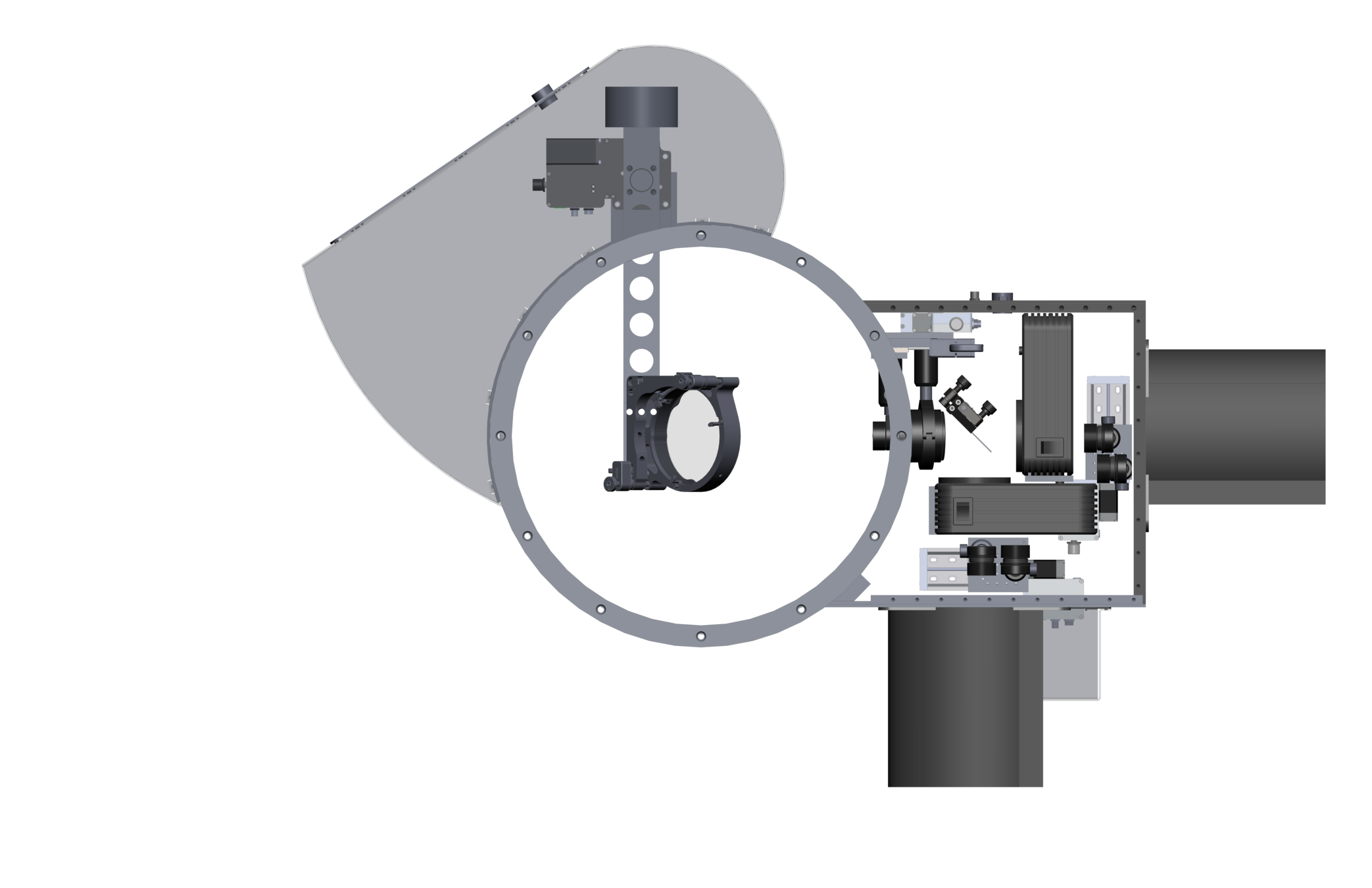
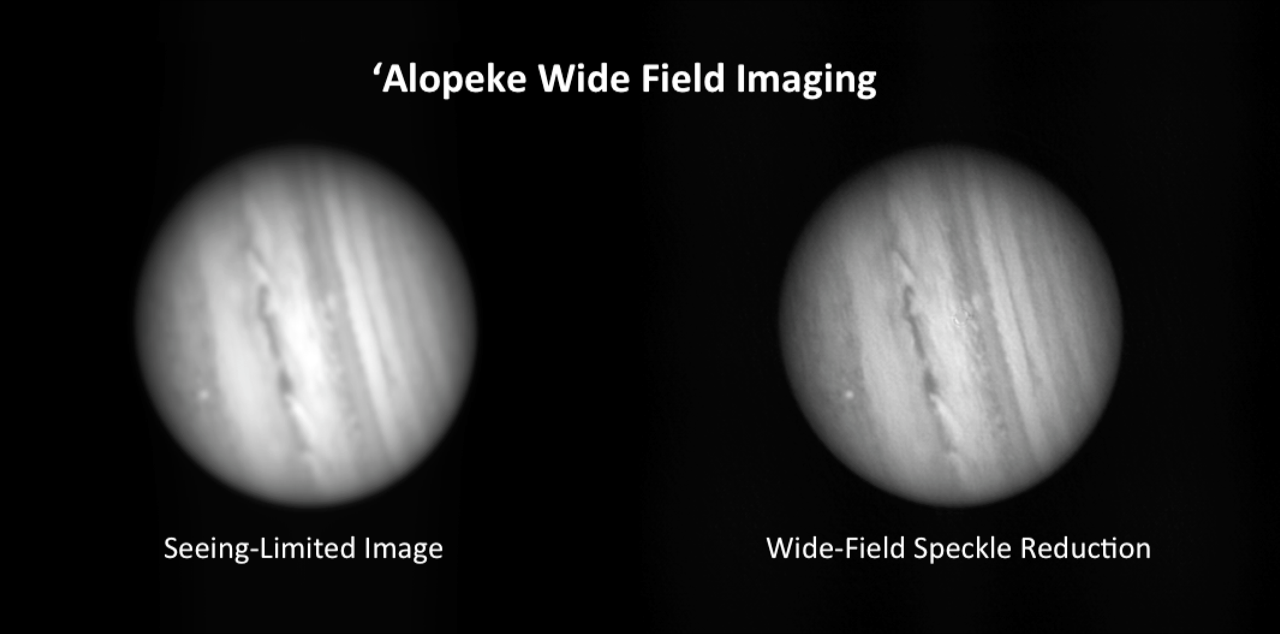




Steve Howell, Elliott Horch, Nic Scott, Rachel Matson
Two-color wide-field speckle reconstruction
from NESSI
- 0.25'' resolution from 500 frames (20s)
- compromise b/t angres and contrast
- 3-4x improvement over seeing
42''

Open to the community
-
NOAO proposal process
-
NESSI - WIYN@KPNO
-
`Alopeke - Gemini-N
-
Zorro - Gemini-S
-
Transitioning from visitor to ''Resident'' instruments


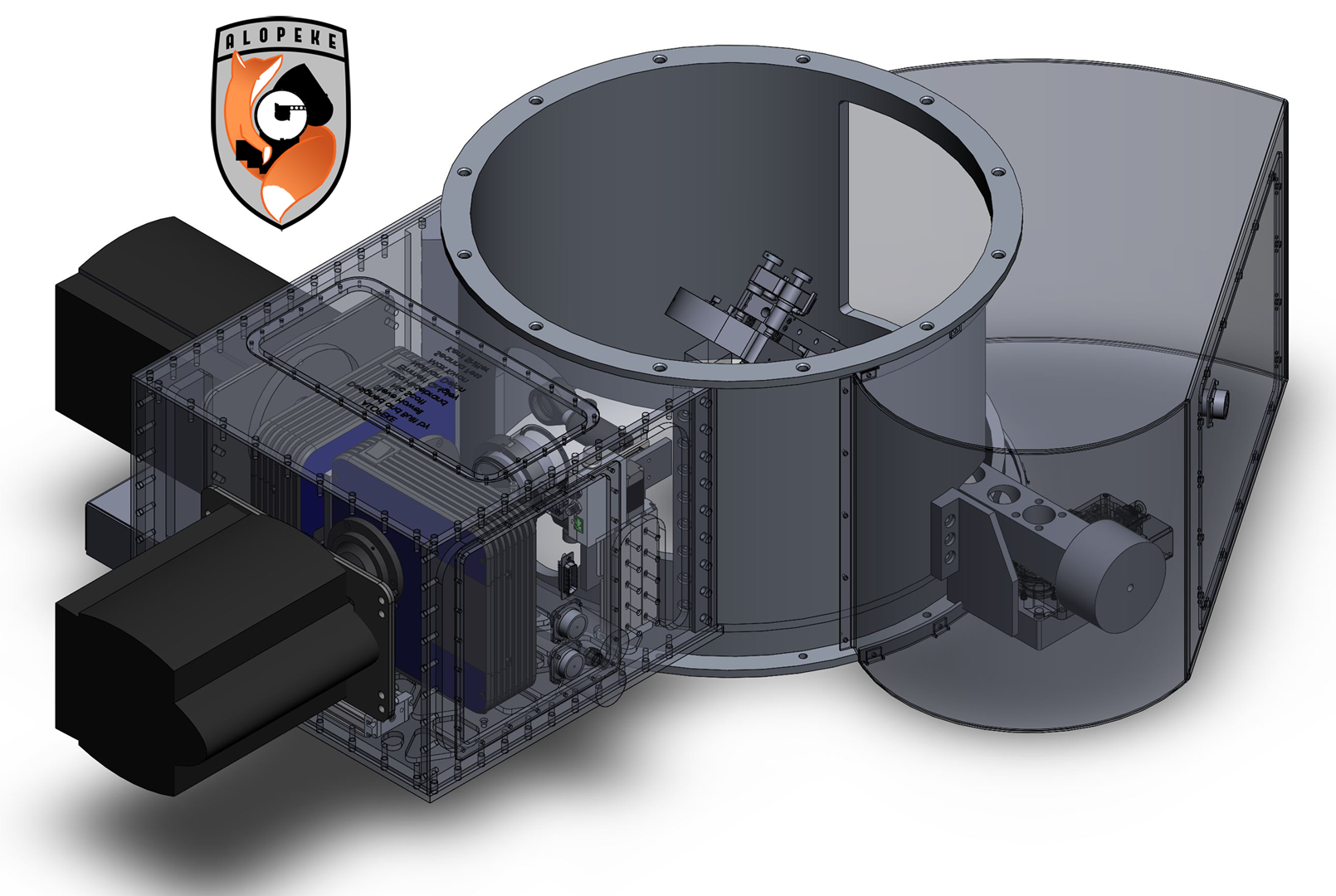



Steve Howell, Elliott Horch, Nic Scott, Rachel Matson
-
mag limit ~17 @G-N
-
6-10 mags contrast
-
diffraction-limited
-
2-colors simultaneously
-
narrow & broad filters
-
narrow & wide field modes
-
typical obs time 1-10mins


Steve Howell, Elliott Horch, Nic Scott, Rachel Matson
`Alopeke / Zorro
Speckle
-
10mas/pxl
-
mag limit ~17
-
contrast limit ~8
Wide Field
-
73mas/pxl
Angular Resolution
NESSI
Speckle
-
18mas/
pxl -
mag limit ~14
-
contrast limit ~6
Wide Field
-
81mas/
pxl
Angular Resolution
0.011'' @u
0.026'' @832nm
0.025'' @u
0.060'' @832nm

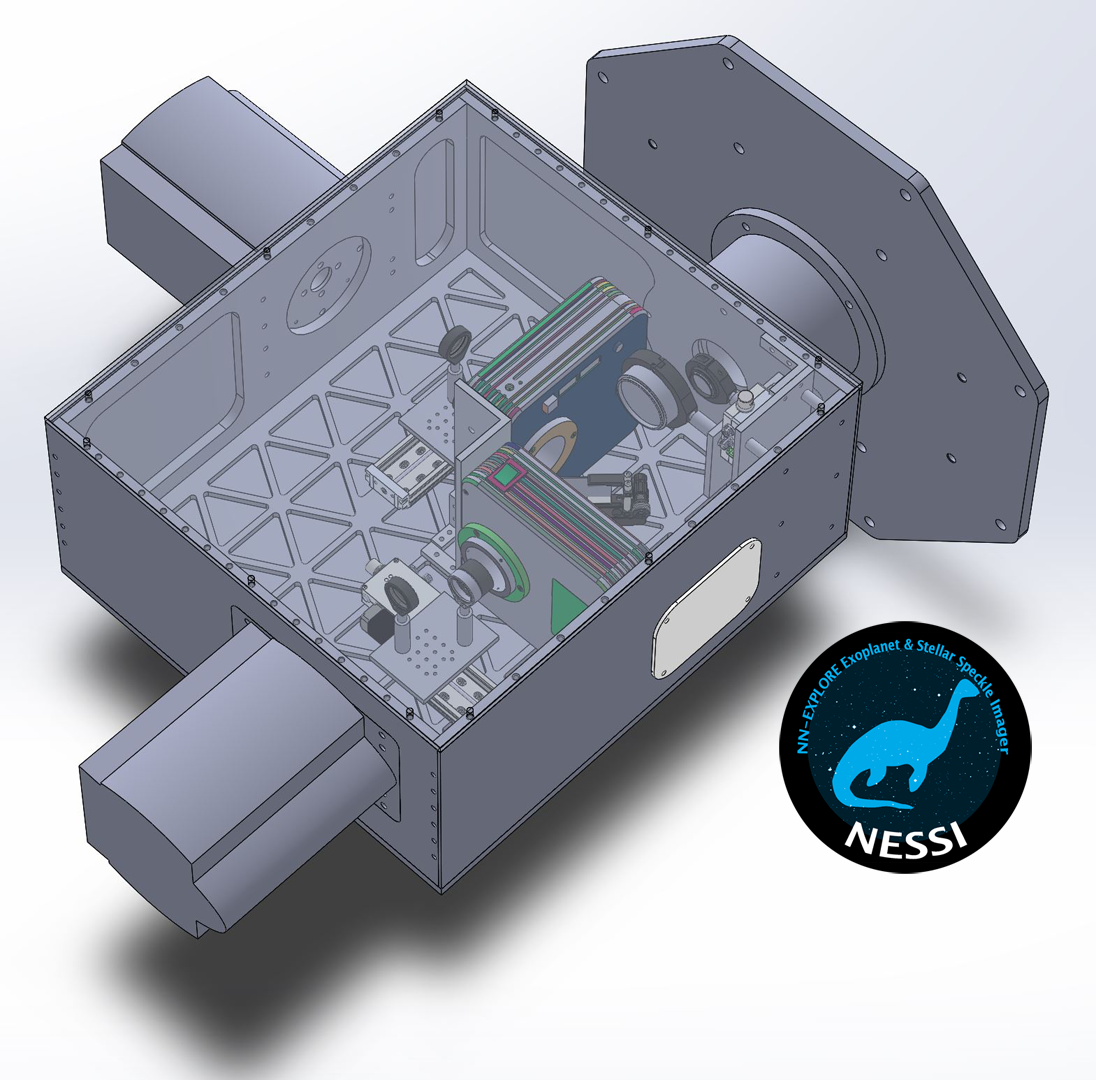

672.9
11
15
17
22
26
mas
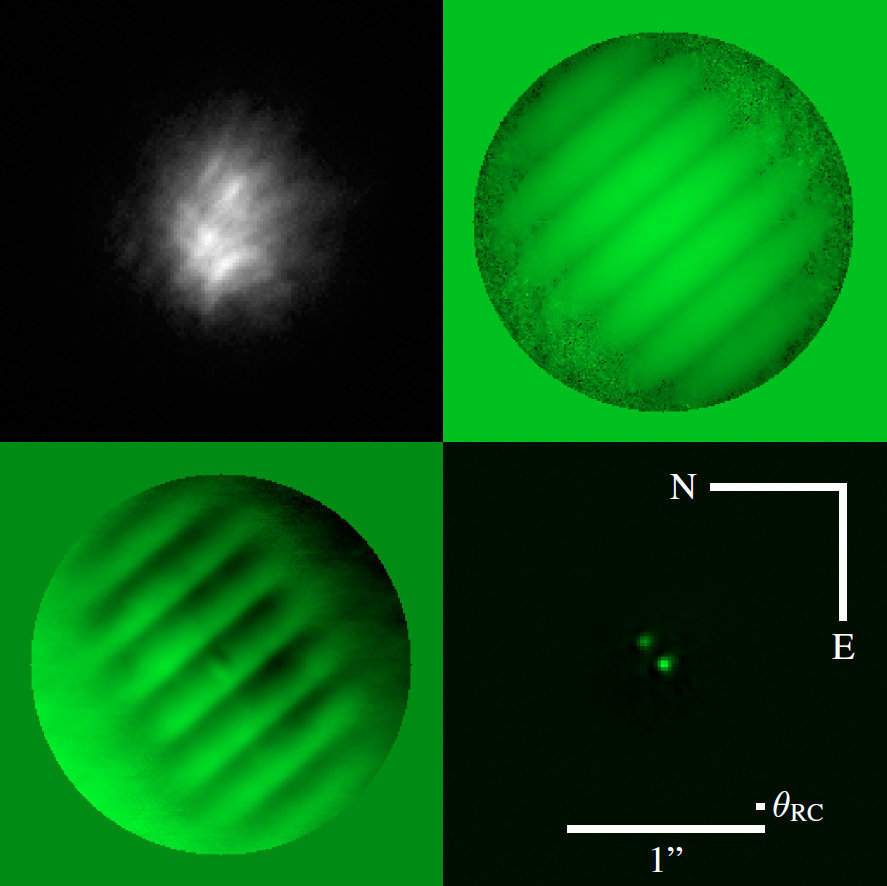
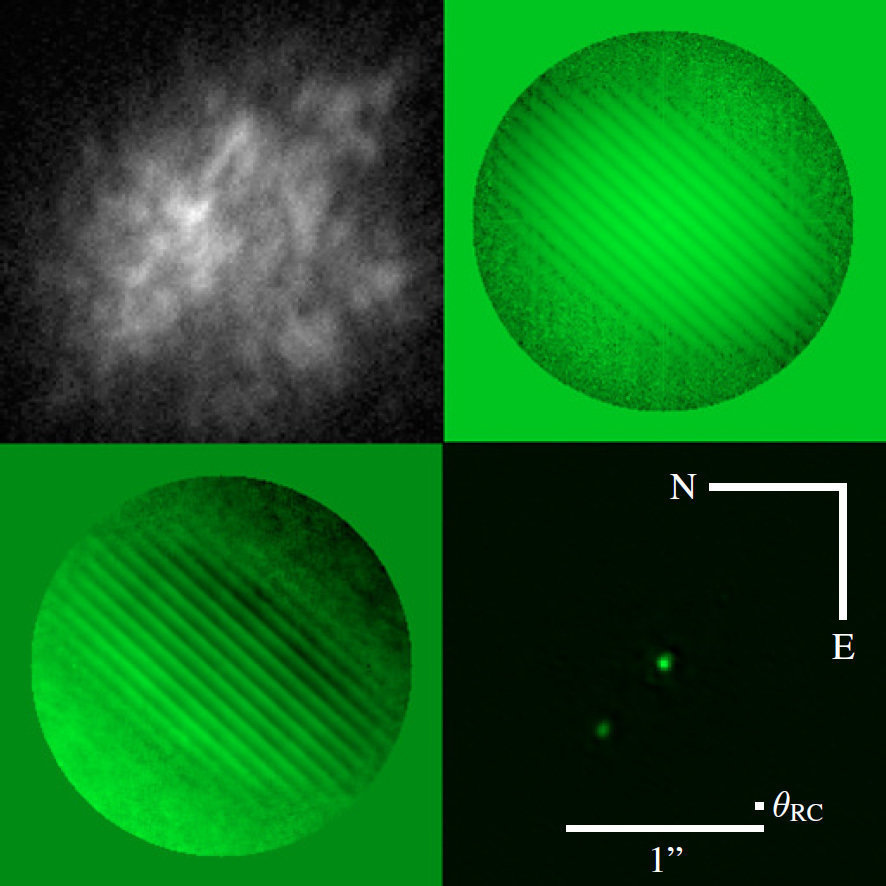
Spacing : Separation
Orientation : Position angle
Depth : Magnitude difference
a single star, lines representing the isoplanatic patch, and the small star shapes are "speckles"
a single star, the smaller turbulent lines show worse seeing and smaller isoplanatic patches, each producing "speckles"
a binary pair, close enough that they share an isoplanatic patch, producing "speckles" that correspond to their separation & position angle
a binary pair, wherein the ratio of their separation to the isoplanatic patch size is such that their "speckles" are not correlated





Steve Howell, Elliott Horch, Nic Scott, Rachel Matson
Fringe : Binary






`Alopeke, Zorro, & NESSI
Resident, diffraction-limited, dual-channel, speckle imagers with “Wide-field” mode at Gemini & WIYN.



Funded by NASA Exoplanet Program for validation and characterization of exoplanet targets from K2, TESS, and RV-discovered exoplanets and open to the community.





Scott et. al 2018
0.1 mag photometry
1 mas astrometry
11 mas resolution
-
highest resolution imaging on any single telescope
-
no guide star needed, observe 100's of objects/night
Instrument specs
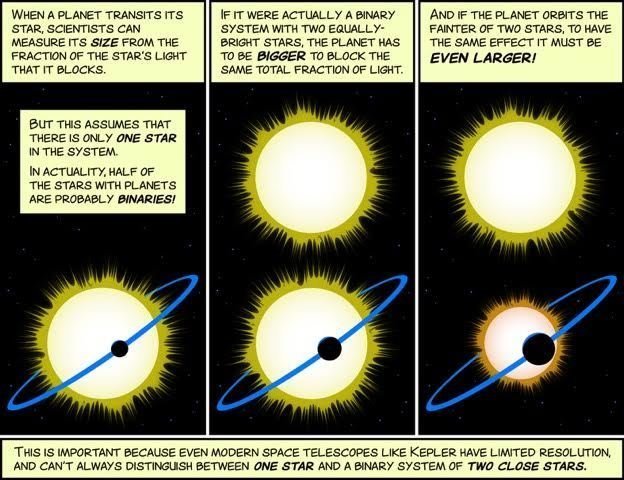



Telescopes with speckle capabilities





-
optical, NIR imaging of host stars of KOIs
-
~ 90% of the confirmed and candidate exoplanet hosts
-
2297 companions around 1903 primary stars ~ 10% of the observed stars 1+ companions detected w/i 1”
-
correction factors for exoplanet radii caused by the dilution of the transit depth decreases the number of KOI planets with radii smaller than 2 Earth radii by 2% - 23%

Furlan's previous results applied to planets w/ known masses & radii, analyze the effects of a close stellar companion on planetary density.
-
50 planets orbiting 26 stars in the Kepler field
-
a transit dilution requires the planet radii to be revised upward, decreasing the density of the planet
-
if planet orbits a faint companion star, density may decrease by ~ 3x



The effect of close ~ 0.5” companions of Kepler and K2 planet candidate hosts had on the inferred exoplanet radius distribution.
-
Fulton gap is robust regarding undetected stellar companions
-
gap became broader & shallower when accounting for possible undetected stellar companions
-
core composition of super-Earth and sub-Neptune exoplanets may not have so strong a divide as is suggested initially
-
w/o high-resolution imaging of Kepler and TESS host stars, the exoplanet radius distribution will be incorrectly inferred.

Fulton
mini-neptunes
super-Earths
-
Large radius errors originally hid distribution features
-
Fulton gap revealed after CKS (10% stellar radius errors)
-
Accounting for binarity shifts gap in the distribution

brightest companion 1''
brightest companion 2''
from 1.8 to 2.2
-
increased water/ice vs pure Si rock

-
170 KOI companions < 2” using AO, speckle, lucky, or the HST
-
constrained their stellar properties and assessed the probability that the companions are physically bound
-
60 - 80% of companions < 1” & > 90% of companions < 0.5” were found to be bound
-
assuming the planet is equally likely to be orbiting the primary or secondary, unless they are vetted, nearly half of all Kepler planets may have radii underestimated by an average of 65%.


-
DSSI @ G-S
-
highest-resolution images to date
-
27 mas
-
imaging from 0.32 to 14.5 au
-
excludes all possible stellar and brown dwarf companions


NEAs
-
radar typically quotes 40% uncertainties in size with a mismatch between albedo and radar size

a~2.8AU
d~270km x 80km
(neck~50-65km)

model: Franck Marchis


Phaethon
Dec 2017 ~ 0.07AU
d~6km


Point source PS
Phaethon power spectrum (resolved)



Matson et. al 2018


Detecting Unresolved Binaries in TESS Data with Speckle Imaging

Potential companions of exoplanet host
Expected binary period distributions (log P) for A, F, G, K, and M stars. The range of periods where speckle can detect companions depends on the binary period distribution and the distance of the host star. The plots show the orbital periods corresponding to projected separations at which speckle (solid shaded regions) or other techniques (hashed regions) can detect companions around stars at distances of 50, 125, 250, and 500pc.
mass ratio of host star + companion vs. V magnitude difference
speckle detection limits
Where companion stars are likely to be found around a host star (related to the period of the companion) depends on what type of star it is.
Bouma et al. 2018